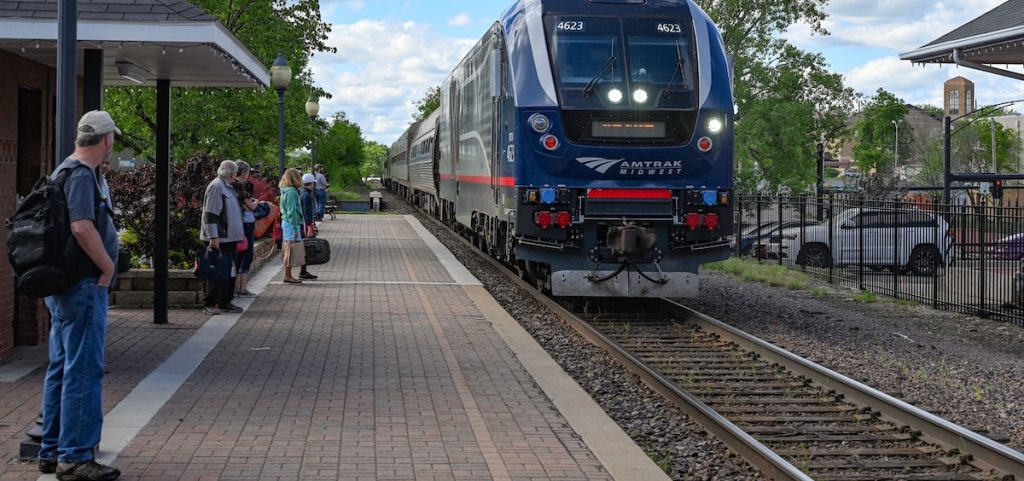The Biden Administration announces funding to study expanding Amtrak service in Ohio
By: Gabriel Scotto
Posted on:
ATHENS, Ohio (WOUB) – The Biden Administration on Thursday announced $8.2 billion in funding for rail projects across the country and funding for identifying passenger rail corridors in Ohio and other states.
Since 2021, the administration has doled out $30 billion in funding for rail infrastructure improvement projects. While some of this money has gone toward freight rail, the overwhelming majority has been for passenger rail.
Ohio is one of 44 states to receive grant money from the Federal Railroad Administration as part of its Corridor ID Program to identify potential passenger rail corridors for future Amtrak service.
“What we’re doing here is we’re creating a pipeline for promising intercity passenger rail projects to get them ready for future investment,” Secretary of Transportation Pete Buttigieg said in a news conference Thursday. “We’ll continue working with railroads, state governments and others to bring these projects to fruition.”

At 5,330 miles, Ohio has the third-largest railroad mileage of any state, behind only Illinois and Texas. Despite this, the only Amtrak service in Ohio is three long-distance trains, the Lake Shore Limited, the Cardinal and the Capitol Limited.
Of Ohio’s 10 largest cities, only Cleveland, Cincinnati and Toledo have passenger rail service. Columbus is the second-largest metropolitan area in the U.S. without Amtrak service, having lost all passenger train service after Amtrak discontinued the National Limited in 1979. Athens lost Amtrak service two years later in 1981, when the Shenandoah was discontinued.
While it is unlikely the Shenandoah will ever be restored because the line it traveled on was abandoned several years after Amtrak service was discontinued, Columbus could potentially receive Amtrak service to Chicago and Pittsburgh, as well as Cleveland, Dayton and Cincinnati.
Other corridors being studied include a route from Cleveland to Toledo and Detroit and an increase in frequency for the Cardinal, Amtrak’s long-distance train from New York and Washington, D.C., to Cincinnati and Chicago. At present, the Cardinal operates three round trips per week.
Buttigieg said these proposals do not represent the be-all and end-all of passenger rail in Ohio. Rather, they represent the proposals that were the furthest along at the time the Federal Railroad Administration announced its Corridor ID Program.
“It’s early days for all of these (projects) that are in Corridor ID. But I think it’s also fair to say that even as these projects advance, it’s not going to be 100% of the answer of a future rail network,” Buttigieg explained. “What you do have is elements that are going to make for a dramatically improved rail network compared to the one we have today.”
Of the $8.2 billion in infrastructure funding announced Thursday, $6 billion will go toward the completion of high-speed rail projects in California and Nevada, with another $1.1 billion going toward the construction of a new passenger rail line from Raleigh, North Carolina, to Richmond, Virginia.
“This is a country that wouldn’t be what it is without the railroads … and yet for decades now, our country has lagged behind other nations when it comes to the quality, speed and reliability of our passenger rail,” Buttigieg said. “Any American who has traveled to Europe, Japan, China or many other developed countries has probably seen for themselves how differently those countries have approached passenger rail, seen how easy and affordable it can be in other countries, and come home saying: ‘Why can’t we have this in America?’ We feel the same way.”

